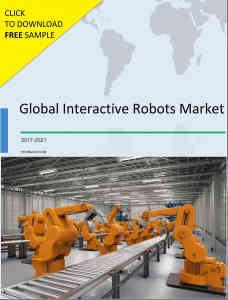Machines have been a significant part of human reality for a long time. However, it was the industrial revolution that marked a major breakthrough in the adoption of automated machines or robots. Since the introduction of robotics, work has been significantly shared between man and machine. And, as robots become more technologically advanced and autonomous, they will operate alongside humans in increasingly collaborative ways.
From Obedient Servants to Efficient Co-workers
Today, in the era of omnipresent technology, robotics has- in both obvious and latent capacities- become a big part of our collective lives. Robots are employed for their intelligence, precision and endless energy, to perform tasks seamlessly and productively, that when performed by humans has a tendency to develop imperfections, thanks to the oft-repeated ‘human error’ and an individual’s tendency to be bored from monotonous and repetitive work. While robots have been proving themselves to be ideal ’employees’, the science of robotics has been changing lives proactively. Listed herein are top 5 ways in which robotics has revolutionized our existence on planet earth.
Top 5 Ways in Which Robotics Has Changed our Lives
 1) AI-powered robots are innovating waste management
1) AI-powered robots are innovating waste management
Populated by intricate networks of high-speed conveyor belts carrying garbage, modern recycling centers use sophisticated sensors to sort plastic from aluminum and paper. While this technology may modernize waste sorting, it is currently not nimble and smart enough to finish the job. However, the future of smart recycling is looking bright with waste-sorting robots. Spider-like robotic arms, guided by artificial intelligence (AI) and sophisticated cameras are competent enough to run municipal recycling facilities more efficiently and profitably.
2) Keeping an eye on suspects through surveillance robots
When normal security cameras capture somebody leaving a suspicious package at a bus station, an individual examining the camera feeds may, if they act quick enough, be able to coordinate with an officer on the ground to follow the culprit before he dodges out of the camera’s field of vision. Commendable, yet not efficient. However, in the future, this job will be more effectively performed by surveillance robots.
The future is about security cameras that see the crime, while onboard a mobile surveillance robot armed with facial recognition technology that can share information immediately with other nearby robotic cameras- all programmed to surveil and pursue suspects to keep them in sight. The latest advances in AI and other disruptive technologies will certainly make a big impact on the quality of life and security of people, by building efficient surveillance robots.
3) Patient care perfected with medical robotics
From personal assistants that can individualize patient care to microbots that scrape plaque from arteries, medical robots are slowly yet surely transforming the face of the healthcare industry. Medical robots play a pivotal role in performing compound tasks that demand immense attention to every detail, as one wrong move may lead to disability or death. These robots aren’t just part of sci-fi movies anymore; they are already deployed in healthcare industries with products ranging from bio-robotics to telepresence, surgical robotics, and many other automated machines.
View more market reports in Robotics Industry
4) Smart manufacturing with industrial robots
In the era of industrial revolution, the manufacturing sector is smartening up with advanced technologies. In this context, robotics is playing an important role in automating and streamlining the operations of varied manufacturing units. Programmed to ensure that production lines do not suffer from bottlenecks and are churning out defect-free products, industrial robots have found wide application in a number of varied manufacturing units. These robots trim-down the chances of product failure and reduce additional expenditures.
5) Robots can take charge in potentially hazardous environments
Human workers are fragile. They cannot work safely and efficiently in situations that are deemed potentially hazardous. Thus, for many years, an assortment of industries has been using robots to navigate dangerous areas without exposing their humans to such extreme and variable conditions. Several industrial environments exist wherein material handling would subject human resources to abnormal stress. Automated robotics, besides increasing precision, quality, and productivity, can also help out with operations that are housed in extreme conditions.
For more market analysis about the global interactive robots market size, top robots companies and robots market trends, please check Technavio’s Global Interactive Robots Market Report 2017-2021, or download your FREE Global Interactive Robots Market Report Sample Now!



